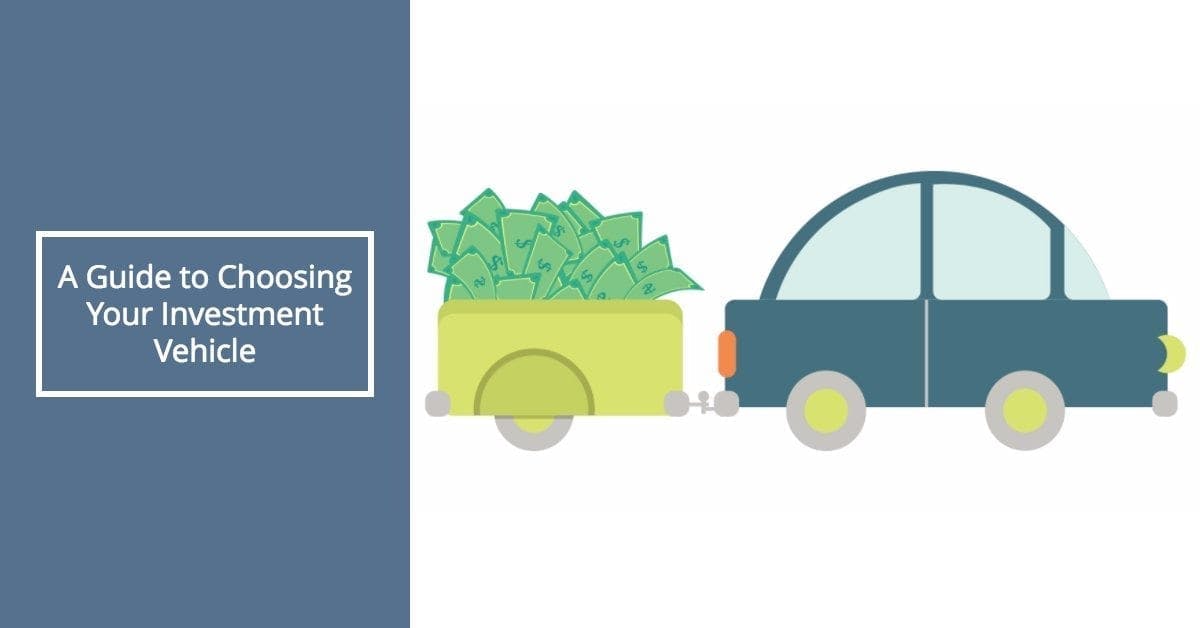As an investor, you need a place to house your money and actually do your investing.
That's where choosing an investment vehicle comes into play. What an investment vehicle? An investment vehicle is simply the method by which you invest your assets and control your money.
Depending on what investment vehicle you choose will determine fee structures, costs and benefits. Types of vehicles include IRAs, 401(k)s, Roth IRAs, bonds, mutual funds and more. You want to choose an investment vehicle that allows you to invest freely in any business that you’d like, without being taxed. Here's an infographic that explains the process of how to choose an investment vehicle that is right for you.
[INFOGRAPHIC] A Guide to Choosing Your Investment Vehicle
View the full size infographic here.
If you could simply buy and hold, you wouldn’t be concerned with taxation.
However, you will need to sell at times in order to ensure you’re only invested when you can get 15% or higher returns.
The times you may need to sell include:
To have money for cost of living at retirement or earlier
When your wonderful business investments cease to be wonderful
When a business you own is priced above Sticker Price
During a market downturn
Anytime you sell, you are subject to taxation. Fortunately, the government has provided us with "tax loopholes" known as IRAs, Roth IRAs, SEP IRAs, 401(k)s, and defined benefit plans.
Often, this means, you can perform your Rule #1 investing within your retirement account. But, which types of investment vehicles are best?
Since I am not a CPA or tax expert, I will bow to the experts on advising you about which vehicle is best-suited for your individual situation. There are dozens of considerations when choosing the right vehicle.
What I will tell you is that I am not a fan of 401(k)s because they force you into the very investment strategy that I created Rule #1 to eradicate. That is, they force investors into mutual funds and diversification that yields depressing market-equivalent returns. I do, however, support 401(k)s with an employer match that basically guarantees you 50% or more on your money.
I suggest opening an IRA and maxing it out. Roth IRAs are tax-free forever. After you pay tax on your money, you put it in an IRA where it grows tax-free. Then, when you retire and take it out, you don’t pay tax on those gains. Nice!
If you have a 401(k) that you are no longer contributing to, or is no longer being matched, you can even roll this account over into an IRA or a Roth IRA. For those of you who are self-employed or own a small business, a Keogh retirement plan may be a good option for you as they offer a higher contribution limit in some cases.
Setting up a plan is simple and any retirement professional can get you set up quickly, there are also plenty of websites where you can set this up online. The key is to get your money into a tax-deferred or tax-free account.
Do You Have Enough Money to Start Investing?
In most cases, you can invest with $500. What’s more important is to make sure you completely understand the company you are investing in. Rule #1 can help you find stocks that match YOUR values so that you can make an impact on this world while making great returns at the same time.
If you're new to the stock market and looking for a free resource, check out my Transformational Investing Webinar. It's a 45-minute training that will teach you everything you need to start investing on your own.

